Looking at an entire decade of Lifestyle and Fashion; radical changes have been registered in the past two years. The focus has shifted to people, the planet, and profit to ensure inclusiveness and sustainability (Fashion.org). The demand has grown significantly with a focus on hygiene and health. This article takes a closer look at the evolving trends in the Home Textiles sector from a consumer perspective. Urban consumers are keen on exploring traditional craftsmanship along with useful innovation. If we look at the global scenario, bedding and sheeting alone contribute to one-fifth of the consumers’ preferred purchase (Lifestyle monitor).
The large population, increasing rate of urbanization, and improved quality of living are largely responsible for the growing demand for home textiles like bedding, bed sheets, towels, carpets, quilts, blankets, and covers. The online platforms and customer reviews have further strengthened the home textile brands’ customer reach.
The ease of understanding the performance aspects, size, and material details of home textiles makes them more likely to engage consumers and enhance their experiences during online purchase. Although the bedding segment accounts for the largest share of home textiles, the wall and floor home products have recorded a significant upsurge (Mordorintelligence.com). This article discusses the mega trends in consumer preferences for the home textiles segment.
Natural Material
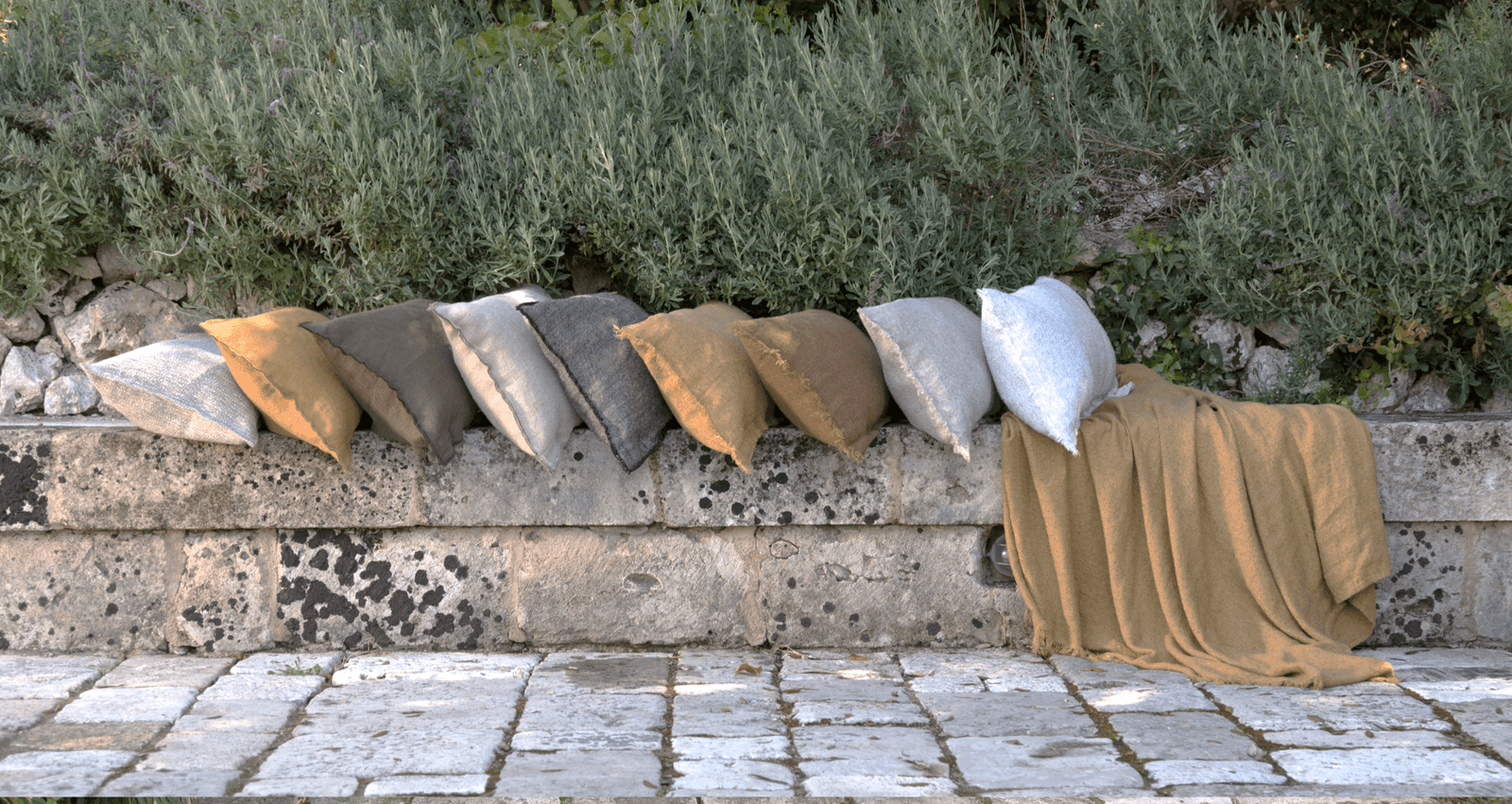
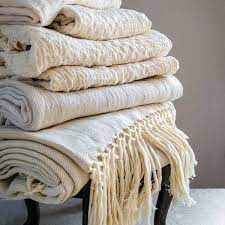
Image 1A Image 1B
Any sudden global lifestyle change is an ideal time to witness a rather orchestrated change in consumption (Andreasen, 1984; Moschis, 2007). Comfort has become a major focus for consumers after the pandemic. The demand for natural materials has been on the rise and is expected to grow in the future. For example, had it not been for the pandemic, it may not have transpired to the masses that work attire might as well be comfortable. Increased demand for comfortable living as well, is one such example where the pandemic eased us gradually into being more open to new lifestyles. As the focus of trends and style has shifted, what sells has shifted too. Humankind practically went into nesting, so those selling nesting supplies have much to gain, at least for the time being. The need and recognition of natural materials has followed the new buying habits. By interviewing an Indian textile business owner dealing in natural materials, it was found that people could afford more of the organic natural materials when they were marked down. During the first phase of lockdowns, the buying capacity was rife and impulsive buying was also observed in a similar fashion. However, according to the brand, this pattern of consumption only lasted for the first phase of lockdown and it is too soon to predict whether or not the same buyers will return.
The fashion and lifestyle industries have been primarily based on humans’ basic need to feel good, both physically and emotionally.
Consumption and changes in taste are not only important to an individual’s desire for aesthetics but also to their emotional need for belonging and self-esteem. At certain occasions, it also reflects an individual’s mental health (Pavia & Mason, 2004). The global lockdown, cultural shift, long-term nesting, working from home, and curbed social gatherings, all as by-products of the pandemic, have significantly disrupted consumers’ fashion clothing and lifestyle consumption. All consumption is anchored to time and location (Sheth, 2020), especially for textile related consumption.
What started as a radical school of thought has now become one with the trends, and every brand that wants to make a mark has started using keywords such as sustainability and natural materials somewhere in their marketing agenda. One of the largest trend forecasters, WGSN, outlined this in its Key Trends for 2021 & Beyond. Natural materials are no longer limited to just cotton, wool, and silk. According to WGSN, new bio materials will start to scale this year, while more established organics will see wider usage across design and interiors. Alongside the popular natural materials, to bring innovation and variety to the market, Mycelium will be a focus for materials innovation as products such as Mylo’s animal-free mycelium leather begin to be scaled by brands. Mycelium has strong potential for design and interiors, but has so far predominantly featured across packaging and concept designs. This year, it will spread its roots to more commercial applications. More market-established organic materials, such as hemp and jute, will also see wider use as consumers lean into natural surfaces and materials that have a story to tell.
………Wellness………
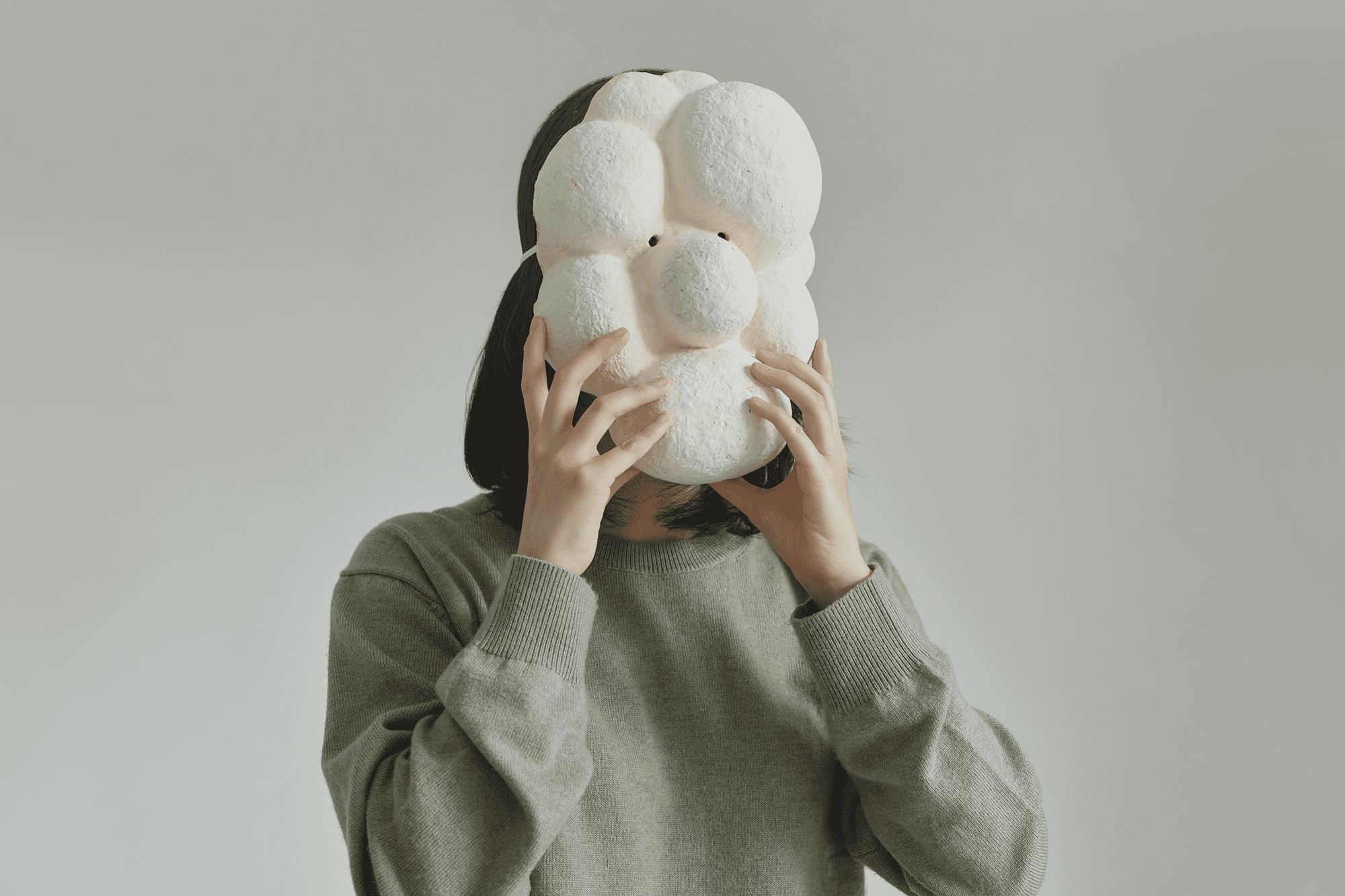

Image 2A Image 2B
Natural fibres are increasingly in demand as home and fashion textiles due to their excellent absorbent nature, but because of the same properties, they are also good surfaces for microbial growth, particularly due to their moisture retention properties. Hence, it is imperative that a textile surface as regularly used as home textiles comes with antimicrobial finishes so they can prevent and reduce potential health risks. Therefore, in conjunction with a rising awareness of infectious diseases, the textile industry and scientists are developing hygienic fabrics through the addition of various antimicrobial and antiviral compounds (WWD.com).
The pandemic has undoubtedly escalated research and innovation in the textile sector as consumers begin looking for a healthier and more hygienic lifestyle. These demands were met by global as well as domestic home textile production giants in partnership. A well-known up-market Indian brand, D’décor Home Fabrics, and HeiQ, a Swiss textile innovation company, came together in 2020 when HeiQ launched HeiQ Viroblock NPJ03 to significantly reduce viral and bacterial infectivity on treated surfaces. The Viroblock is suitable for all fibre types, from medical nonwovens to fabrics for clothing and home textiles and can last at least 30 gentle washes.
As the pandemic takes hold in India in July 2020, Nikita Desai, Vice President-Strategy and Business Excellence, D’décor, writes to Newindianexpress.com: “What if the fabric you wear, or the fabric you sleep on, has the capability to combat viruses such as the coronavirus, influenza, and swine flu?”
Technology has been constantly terraforming the textile landscape, allowing D’décor to bring flame retardant, water repellent, and stain-resistant and spill-proof fabrics to Indian consumers, without compromising on the promise of aesthetic beauty. And in the current environment, we find it incumbent on us to see that our fabrics provide our customers with as complete a solution for a safe home environment as possible. “
COVID-19 ended up not only introducing this category of textiles but also providing the necessary context. In an already increasingly health-conscious world, the pandemic was a trigger which in turn led to a shorter path of acceptance from consumers from the luxury segment to a widely sought-after choice in the upper middle-class homes.
………Value………
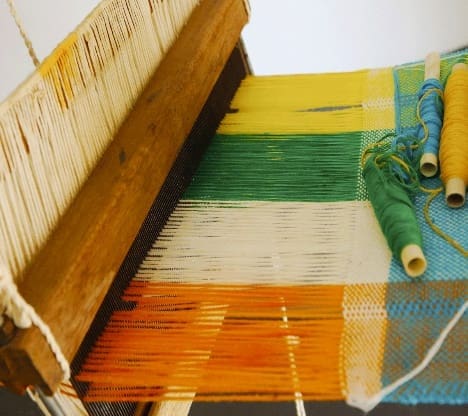
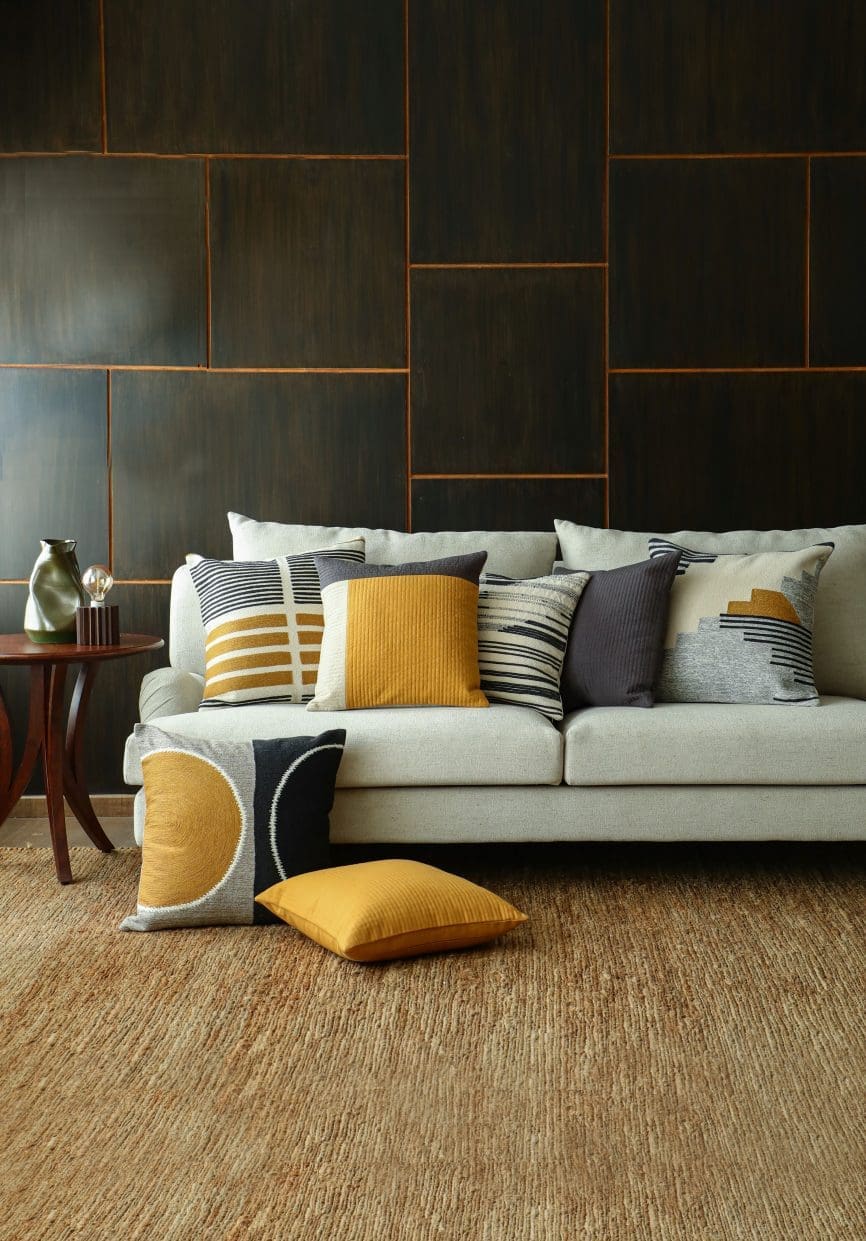
Image 3A Image 3B
COVID-19 also played a significant role in driving the trends towards creating and appreciating value. The consumer has become conscious of what they are purchasing and what values it offers. While value for money is undoubtedly the most important consideration, consumers also consider functional values, longevity, emotional values, ease of use, maintenance, and overall aesthetic value.
For example, brands are aiming towards offering washing machine-friendly products, products with less wear and tear. Storytelling and consumer engagement have become effective tools for communicating values to consumers. For example, how a product is made and who is making it becomes a point of discovery for consumers. Usually, textile products do not come with after-sales services, but this is another potential area to look at since a lot of technical and functional textile products may require after-sales or maintenance services. The service industry may look at the values they can offer with the use of textiles and lifestyle products to make the consumer experience memorable and useful. “The ever-growing conscious consumer group looks for value beyond material and utility. The significance of textiles goes beyond their material. The story behind the brand or a particular product and its lifecycle is nearly as significant as the price point or trends to a group of consumers. “
………Conclusion………
Although this article discusses the key points of consumer focus, there are numerous aspects that need further analysis to define it product segment-wise. The pandemic has posed a common factor among all. The common factors experienced by people globally were much higher in comparison to the distinct circumstances. Therefore, people could relate to the common aspects globally. These common factors, such as the need for safety, radical reforms, community and belongingness, and self-healing and optimism, are the driving forces that will shape the consumer trends for the coming years. Consumers also look forward to prioritising their needs and focusing on products and experiences with integrated personalised values. Emotional balance has emerged as another focus for designing and communicating textile products to consumers. Overall, we can conclude by stating that the consumer is continuously evolving on various levels. Therefore, textile products need careful consideration from design conceptualization to final presentation.
References:
- https://www.fashionabc.org/key-market-trends-in-the-global-textile-industry/
- https://lifestylemonitor.cottoninc.com/reviving-consumer-demand-for-home-textiles/
- https://www.mordorintelligence.com/industry-reports/textiles-home-decor-market
- https://repository.lib.ncsu.edu/handle/1840.16/1467?show=full
- https://www.researchgate.net/publication/308916782_Consumer_Attitude_and_Purchase_Decision_towards_Textiles_and_Apparel_Products
- https://www.proquest.com/openview/3b209bff322c6bd64e135a3e749c3b4b/1?cbl=51922&diss=y&pq-origsite=gscholar
- https://wwd.com/fashion-news/textiles/antiviral-fabrics-become-market-standard-1234685029/
- https://www.newindianexpress.com/cities/hyderabad/2020/jul/30/and-now-anti-viral-fabrics-2176598.html
- https://www.business-standard.com/article/companies/textile-houses-step-up-antiviral-apparel-launch-amid-spiking-covid-19-cases-120092200360_1.html
- https://www.innovationintextiles.com/survey-shows-transparency-is-key-for-clothing-and-home-textiles-brands/
- https://journals.sagepub.com/doi/full/10.1177/0887302X211014973
Image References:
Image 1A: https://lissoy.fr/index.php
Image 1B: https://acultivatedliving.com/wellness-design-5-reasons-to-switch-to-linen-for-a-healthy-home/
Image 2A: https://kuo-duo.com/Works-Mycelium-Mask
Image 2 B: https://www.cbi.eu/news/covid-19-boosts-importance-wellness-trend-hdht-sector
Image 3 A: https://economictimes.indiatimes.com/markets/stocks/recos/buy-grasim-industries-target-price-rs-1630-yes-securities/articleshow/84963519.cms
Image 3 B: https://www.architecturaldigest.in/article/sarita-handa-launches-exclusive-furniture-line-e-store-heres-need-know/#s-cust0
Authors:
Prof. Dr. Kislaya Choudhary, Dept. of Textile Design,
National Institute of Fashion Technology, Mumbai
&
Vasu Vasudha Textile Designer,
NIFT Mumbai, (Batch 2015-19)
